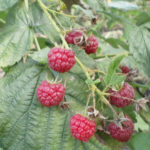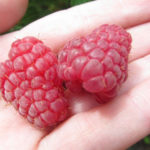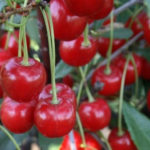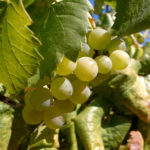Blueberry variety Bonus
The hero of our article is a relatively new Bonus variety. And in the Russian-speaking and English-speaking Internet space there is very little reliable information about him, the characteristics are indicated only in general terms. And as they say - when eyewitnesses are silent, legends are born. For "general development" I went through many sites and at least cheered myself up. What they just do not write there! And the fact that Bonus is a breakthrough in Canadian selection, and that it is derived from the deciduous shrub "tall vaccinium" and the like. Well, you should at least read a little about blueberries in general for a start, and then scribble articles. And they would know that lat. Vaccinium corymbosum is a type of deciduous shrub from the genus Vaccinium of the Heather family. He's a tall blueberry. And also the genus Vaccinium includes blueberries, lingonberries, cranberries. So who the Bonus really is and how it will be of interest to us - more on that in the article below.
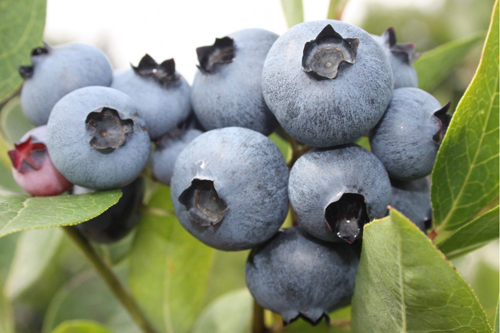
History of creation
The emphasis in selection was made primarily on achieving large and simply huge sizes of fruits, and then good taste and yield. The variety was initially positioned as one of the largest-fruited in the world, a direct competitor to the famous record holder for the largest berries - Chandler. Created by American breeders from De Grandchamp's Farm, located in South Haven, Michigan, with the participation of scientists from Michigan State University, which has a significant impact on the blueberry industry not only in the United States, but around the world. For almost 30 years, the researcher and breeder of strawberries and blueberries, the author of varieties such as Aurora, Draper, Liberty, Huron, Calypso and Osorno, Professor Jim Hancock has played an important role in it.
Description
The variety is of medium late ripening, in the southern regions it ripens in the second half of July, in other regions in the end of July and the first half of August (in South Haven, Michigan, USA, it ripens from the end of July). The Bonus bush is medium-sized, the habit is raised, open, it produces shoots well, 1.4-1.6 meters high, as an exception it can grow up to 1.8 meters. Shoots are powerful, resilient, erect, but rather spreading. Withstands the weight of numerous large berries. The width of the bush is up to 1.2-1.3 meters. In adult plants, the thickness of the stems is 2-3 cm. Young shoots are green, by autumn they acquire a reddish-brick hue, which, together with reddened foliage, looks very decorative. With age, blueberry shoots become woody and become light brown in color. The variety thickens moderately, so it needs moderate pruning. It reproduces quite well by green cuttings.
Leaves of intense dark green color, smooth, dense. They are elliptical in shape, pointed at the ends, on short petioles, with solid edges. 6-8 cm long and 3-4 cm wide. Young leaves are light green. By autumn they turn red, acquiring a beautiful scarlet color. This makes the Bonus quite suitable for decorative purposes.
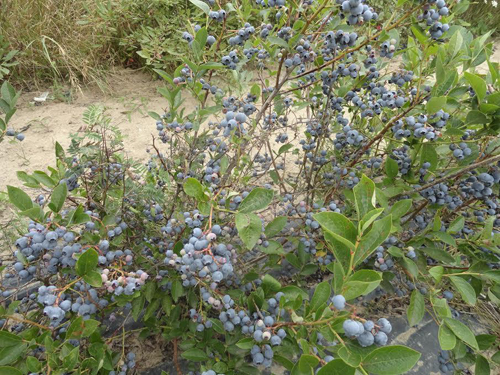
The root system is fibrous, well branched, without hairs absorbing nutrients from the soil. It germinates up to 40 cm deep. The variety is quite sensitive to the required acidity of the soil, it should be at a pH level of 3.5-4.0. The plant is nourished using mycorrhiza. Mycorrhiza (fungus root) is a symbiosis of the mycelium of the fungus with the roots of higher plants, in particular blueberries. If, for example, the leaves become pale, yellowish, then the acidity of the soil is close to neutral. Mycorrhiza can absorb nutrients from the soil only in an acidic environment. And even if the Bonus is in the soil rich in nutrients, he will not be able to receive them, since the mycorrhiza will not "work". Therefore, it is necessary to monitor the acidity of the soil, in which case acidification should be carried out using citric acid, electrolyte diluted with water.
Flowers are white, bell-shaped, up to 1 cm in length, with small teeth bent back. Collected in numerous brushes.Blueberries bloom in the second half of May, flowering is long, can last until the third decade of June. The variety is resistant to recurrent spring frosts. The bonus is self-fertile, but cross-pollination with other varieties improves the quality and size of the berries. It is necessary that the flowering dates coincide. For example, Bluegold is suitable for these purposes.
The berries are rounded-flattened, with a small perianth. The size is from medium to large and very large, 1.8-2 cm in diameter, but can be poured up to 2.5-3 cm.Weight on average 1.8-2.5 grams, but often holds out with a large diameter of the fruit and up to 3.5 grams. As for blueberries, this is a very large berry. According to American studies, there are an average of 100 fruits per pound (0.45 kg). Bonus berries have another quality - for people seeing them for the first time, they cause the so-called "wow effect". In this he competes with another recognized leader in fruit size - Chandler. The marketing term "wow effect" is essentially a joyful surprise when a person, as is often said, is overwhelmed by some kind of drastic change in his condition. That is, again, the task of such an effect is to amaze and stun, to express all the emotions from what he saw with the exclamation “Wow !!!”. Fruits are collected in open clusters, mainly 10-20 pieces. In adult plants, there may be more berries in clusters. The bonus enters into full force after reaching the age of five. Moreover, the berries are often heterogeneous in shape and size. Interestingly, there is a direct dependence of the shape on the size - the larger the berries, the more flattened they are.
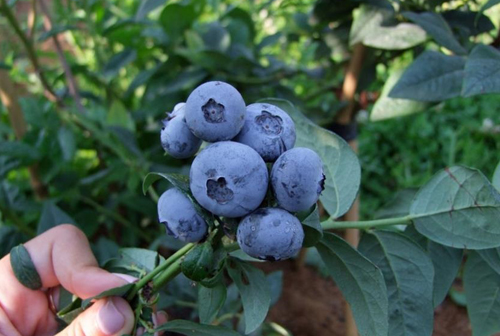
The fruits themselves of the variety are high-quality, elastic and dense, but the pulp is juicy, greenish in color with small seeds. With a slight dry scar after harvest. The skin is firm and elastic. Blueberry berries are bright, deep light blue, covered with a strong waxy coating. They retain their beautiful color even when stored after harvest. Fruits of a very good, rich, bright and memorable taste with a slight piquant sourness, sweet, with a strong aroma. Sugar and acid are perfectly balanced in fruits. But interestingly, a change in color from green to blue does not mean complete ripeness. Only after 10-14 days after staining, the fruits become truly tasty and sweet. Bonus berries are rich in valuable physiologically active substances: bioflavonoids, anthocyanins, leukoanthocyanins, catechins, chlorogenic and triterpenic acids. Also, its fruits are a valuable source of an important anti-atherosclerotic and lipotropic substance - betaine, which has an anti-ulcer effect.
The fruits have good keeping quality, are stored for a long time, especially after cooling. They are well transported over long distances, do not wrinkle or leak. The berries look great on the market counter, immediately grabbing the attention of buyers. The fruits are used for personal consumption and the fresh market, suitable for freezing. Due to their excellent taste and aroma, as well as their impressive size, they are actively used in cooking, in particular for decorating desserts, cakes
The variety is fruitful, quite hardy. The harvest is regular, in adult plants the indicators reach 5-6 kg, sometimes up to 8 kg. But such a crop can be obtained on a well-developed, tall bush with competent agricultural technology, including the timely provision of blueberries with all the necessary micro- and macroelements. The fruits ripen rather unevenly, there is no mass, so the Bonus is not suitable for mechanized harvesting, it is simply not economically feasible. But for manual sampling, it is very suitable, thanks to open clusters and large fruits.And the originators recommend only hand picking for the fresh berry market.
Our hero prefers growing in the open sun or in little shade. Loves light, well-drained, acidic soils. Possesses high frost resistance, up to -35 ° С. It is also resistant to temperature extremes.
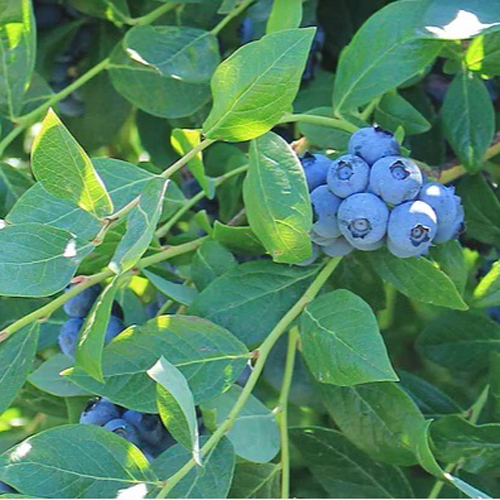
Interesting data on the comparative taste characteristics of varieties were published by the University of Delaware, USA in 2015. 14 varieties were evaluated: Jubilee, Bonus, Toro, Bluecrop, Chandler, Legacy, Misty, Lenier, Bluegold, River, Aurora, Liberty, Arlen, Darrow. The figures are presented as a percentage based on the number of 100% tasters. The blueberry taste criteria are delicious, good, normal, awful, delicious, or good.
The Bonus Metrics are amazing 16%, good 42%, ok 37%, awful 5%, amazing or good 58%. In terms of delicious taste, only Chandler was ahead of him with 26% for delicious and 9% for awful, Misty with 18%, but she also has a lot of percent for terrible taste - 27. After the Bonus, Jubilee immediately followed with a rating of 15% for delicious, but and the same number of people who described its taste as awful - 15%. Toro 13%, he is the only one who does not have those who voted for this variety, as terrible. The leaders of the anti-rating are blueberries Liberty 32%, River 25%, again Misty 27%, Darrow 19%, Bluecrop 17%. According to the timing in Delaware (one of the mid-Atlantic states of the United States), our hero ripens from July 15, and the peak of the harvest falls on July 30.
The scientific work of St. Petersburg scientists is interesting (especially for residents of the northern regions of our country). The research was carried out in 2013–2015 on the basis of the educational and experimental garden of St. Petersburg State Agrarian University. Planting material (11 varieties) was imported from Belarus and Finland.
The acidity of the planting soil was 3.6, which is the optimal indicator for growing blueberries. Planting scheme for two-year-old seedlings: 1.5 meters between plants in a row with a row spacing of 2.0 meters. The landing date is August 2013. The counts and observations were carried out according to the "Program and methodology for the study of varieties of fruit, berry and nut crops."
According to 2015 data, the blooming of vegetative buds on Bonus took place on May 4, the growth of the main shoots began on June 7, and the branching shoots began to grow from May 14. The beginning of flowering from June 17, the beginning of ripening of berries from September 1, full ripening - September 22. All shoots finished their growth by September 3. The leaves began to turn red from September 16, completely colored on September 28. The beginning of leaf fall from September 25, ending November 10. As a result of phenological observations, it was found that all the studied varieties of tall blueberries correspond to seasonal rhythms, form the yield of berry products and fit into the growing season of the Leningrad region. Specifically, our hero showed himself as late ripening. After the winter period of 2015, a slight freezing of shoots (0.3 points) was noted on it, which can be described as very insignificant. The safety of plants after coming out of winter was 100%. In 2014, freezing was not noticed at all.
According to the results of 2015, the Bonus formed 6 new main shoots (formation shoots) and 44 branch shoots (sidewalls). The length of the leaves was 5.6 cm, the width was 2.8 cm.The average weight of the berry was 1.7 grams, the diameter was 1.6-1.7 cm.
I think our article helped to make a general impression of the variety. The ending is similar to the strengths and weaknesses of our hero.
Strengths
- Large and very large, pleasantly surprising fruit size. The bonus has one hundred percent "Wow-effect".
- Good transportability and keeping quality of blueberries, especially if cooling is used after harvesting. Maintaining color depth after harvest, the fruit looks great on the market stall.
- Sweet, rich, full-bodied taste with a slight piquant sourness and thick aroma.
- Good yields, especially considering the low, average growth of the bushes.
- Resistance to major diseases, plant endurance in general.
- High content of vitamins, antioxidants and physiologically active substances in fruits.
- Good frost resistance (up to -35 ° C) varieties, the possibility of harvesting even in the northern regions.
- The feasibility of growing both for personal consumption and for sale.
- The versatility of the use of fruits (processing, freezing, cooking
etc. ). - The Bonus bush does not thicken too much, pruning is moderate.
- The ability to use blueberries in landscaping to decorate the site.
Weak sides
- Prolonged fruiting period, berries ripen rather unevenly. For market trading, this is a minus, since for a more or less large sample size, you need to have a sufficient number of plants. But for personal consumption, this is a plus - the opportunity to feast on a berry for a long time from one variety.
- Also, uneven ripening makes mechanized harvesting impractical.
- From the moment of coloring to a set with sugar berries and a really great taste, 10-14 days pass. And those who have little experience in growing blueberries can harvest the actually green, unripe fruits, but already having a bluish color. One of the signs of the ripening of berries is the separation from the stalk without any effort, with a characteristic sound that resembles a separation, for example, of a sucker from a wall.
- Average vigor, which prevents the bush from reaching very high yields.
In general, what can be added - the Bonus will really become a valuable find for a garden plot and for farms that use manual labor. Believe me - having seen its fruits once, you will never forget them again. But in the northern regions, it is still better to choose varieties with an earlier ripening period.
Author: Maxim Zarechny.

